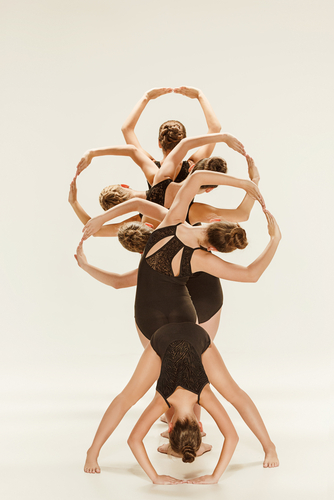 Glide reflection combines translation and reflection. In this symmetry operation, a shape is moved a constant distance and then reflected; that is, the shape is oriented in an opposite direction. Many ornamental borders utilize this combination of symmetry operations.
Glide reflection combines translation and reflection. In this symmetry operation, a shape is moved a constant distance and then reflected; that is, the shape is oriented in an opposite direction. Many ornamental borders utilize this combination of symmetry operations.
In dance, glide reflection patterns can often be created by having dancers face in different directions. For example, in a line extending across the stage, the dancers alternate facing downstage or upstage. Or two lines of dancers stand facing each other then and cross through each other’s lines, heading in opposite directions.
Glide reflection plays a key role in the group pose shown here. The arm position is translated and reflected between the front and back dancers (a vertical reflection), as well between the four dancers in the middle (lateral reflections). In addition, the dancer in front poses in a shape of bilateral symmetry. The group shape as whole also has bilateral symmetry.
